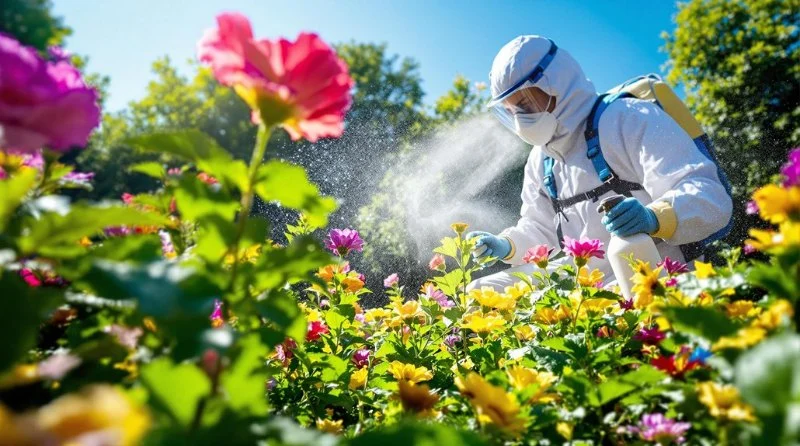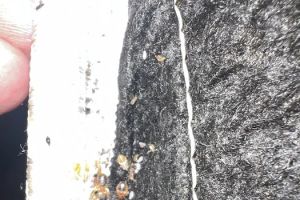
How to Evaluate Pest Return Risk Over Time
- 1. Understanding Pest Return Risk
- 2. Key Factors Affecting Pest Return Risk
- 3. Assessing Environmental Conditions for Pest Risk
- 4. Monitoring Pest Populations Over Time
- 5. Strategies for Reducing Pest Return Risk
1. Understanding Pest Return Risk
When it comes to pest control, one of the most important factors to consider is the risk of pests returning after treatment. Evaluating the risk of pest return over time can help you plan effective long-term strategies to maintain a pest-free environment. This process involves not only considering the effectiveness of the initial treatment but also understanding the external factors that can contribute to an infestation.
In this article, we'll dive into how to assess pest return risk and share tips on managing it to keep your home or business protected from future pest issues.
2. Key Factors Affecting Pest Return Risk
Several factors play a role in determining the likelihood of pests returning after treatment. Understanding these factors can help you evaluate the risk more accurately:
- Environmental Conditions: Pests are attracted to specific environmental conditions. High humidity, poor ventilation, and access to food and water make your property a potential target for re-infestation.
- Type of Pest: Different pests have varying tendencies to return. For example, rodents may return through small gaps or cracks in walls, while ants and termites might be more likely to return if the environment remains conducive to their presence.
- Neighborhood Infestation: If your neighbors are dealing with similar pest issues, your property might be at a higher risk of re-infestation, especially for pests like rodents or bedbugs that easily travel between properties.
- Effectiveness of Initial Treatment: A treatment that doesn’t fully eliminate pests or address their breeding grounds can lead to a higher chance of return. Ensuring comprehensive coverage during the first treatment is key to preventing re-infestation.
3. Assessing Environmental Conditions for Pest Risk
To evaluate the risk of pest return over time, it’s essential to assess the environmental conditions around your property. Consider the following factors:
- Moisture Levels: Many pests, especially termites and cockroaches, thrive in damp environments. Check for leaks, standing water, or areas with poor drainage that could attract pests.
- Food Sources: Leftover food, pet food, or garbage can attract pests. Regular cleaning and proper food storage are essential in reducing the risk of pests returning.
- Sealing Gaps: Gaps in doors, windows, or cracks in walls can serve as entry points for pests. Regularly inspect and seal any gaps to reduce the likelihood of pests returning.
4. Monitoring Pest Populations Over Time
Once you've implemented pest control measures, it’s important to monitor the population of pests over time. Monitoring helps you assess whether your treatment was effective or if there is a need for further intervention. Here are a few methods to monitor pest activity:
- Traps and Bait Stations: Setting up traps or bait stations can help you detect any ongoing pest activity. If pests are consistently found in traps, this might indicate a higher risk of re-infestation.
- Professional Inspections: Regular inspections by pest control professionals can provide valuable insights into the effectiveness of the treatment and any potential risks of pest return.
- Signs of New Activity: Keep an eye out for droppings, gnaw marks, or other signs that indicate pests are returning. Early detection is crucial for preventing larger infestations.
5. Strategies for Reducing Pest Return Risk
To minimize the risk of pests returning, it’s essential to implement ongoing preventive strategies. Here are a few steps you can take:
- Regular Pest Control Treatments: Schedule regular follow-up treatments with a professional pest control service to ensure continued protection and catch any early signs of pest activity.
- Improve Your Property’s Defenses: Install weather stripping, repair cracks in your foundation, and ensure that all entry points are sealed to reduce access for pests.
- Maintain a Clean Environment: Cleanliness plays a crucial role in pest prevention. Regularly remove food waste, vacuum, and sanitize areas where pests might hide.
- Landscaping Adjustments: Trim back vegetation, remove debris, and create a barrier between your home and pest-friendly environments like wooded areas or trash bins.
By evaluating pest return risk and taking these steps, you can better protect your home from recurring infestations. For expert advice and pest control solutions, visit PestControlHub for the best products and services tailored to your needs.








 Wildlife Resolutions4.0 (443 reviews)
Wildlife Resolutions4.0 (443 reviews) Pest Marshals of Toledo5.0 (2 reviews)
Pest Marshals of Toledo5.0 (2 reviews) LS Rodent Proofing & Pest Control Service5.0 (4 reviews)
LS Rodent Proofing & Pest Control Service5.0 (4 reviews) Best Termite & Pest Control4.0 (16 reviews)
Best Termite & Pest Control4.0 (16 reviews) Varment Guard Wildlife Services5.0 (28 reviews)
Varment Guard Wildlife Services5.0 (28 reviews) Pestban Inc4.0 (394 reviews)
Pestban Inc4.0 (394 reviews) How to Use Monitors to Detect Pest Entry: A Comprehensive Guide
How to Use Monitors to Detect Pest Entry: A Comprehensive Guide How to Predict Which Pests Will Invade Next – Smart Pest Forecasting for the U.S.
How to Predict Which Pests Will Invade Next – Smart Pest Forecasting for the U.S. How to Conduct a Pest Risk Assessment at Home – Expert Guide
How to Conduct a Pest Risk Assessment at Home – Expert Guide How to Block Pest Entry Around Deck Joists: Effective Solutions
How to Block Pest Entry Around Deck Joists: Effective Solutions How to Safely Use Fumigation Methods: A Comprehensive Guide for Homeowners
How to Safely Use Fumigation Methods: A Comprehensive Guide for Homeowners Why Pests Are More Active After Rain: Understanding the Link Between Weather and Pest Behavior
Why Pests Are More Active After Rain: Understanding the Link Between Weather and Pest Behavior